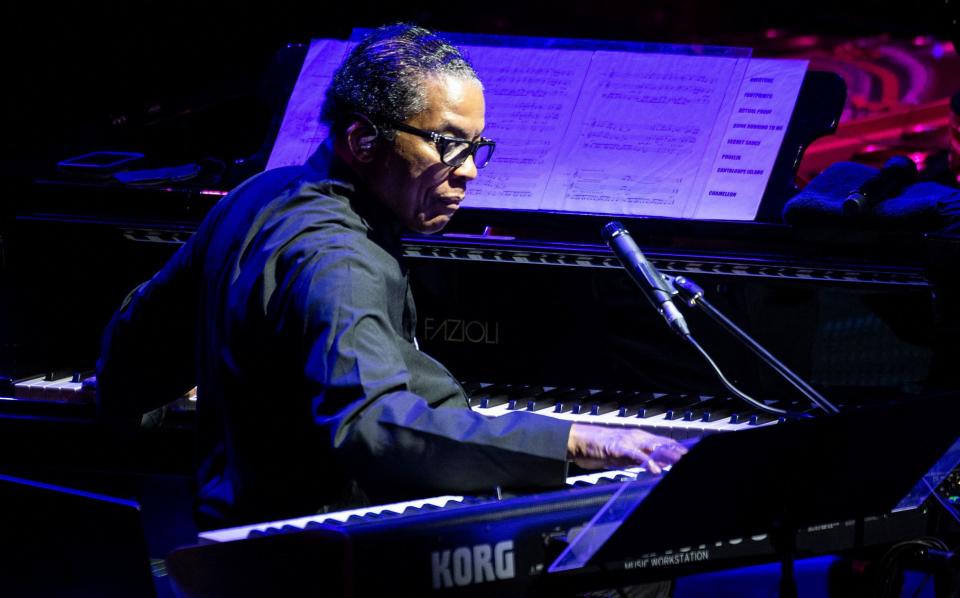Edinburgh – Herbie Hancock: some magical musicianship, but where were the hits?

At the age of 82, and with a glittering 60-year career behind him, Herbie Hancock could be forgiven for recycling old triumphs. One got the sense that the packed crowd at the Edinburgh Playhouse would have been delighted if he had done precisely that.
Instead, Hancock gave a curious almost two-hour set in which memories of those old hits were glimpsed briefly in the welter of sound before disappearing. He ambled on stage with his three co-players, dapper as ever, and welcomed us with some musings on the state of the world in which he praised the one-ness of humanity (which drew ragged cheers) and marvelled at the universe revealed by the new James Webb telescope (which drew rather fewer cheers). “We’re gonna look through that telescope now” he told us.
One felt that a harking-back to Hancock’s mystical phase on the early 1970s when he experimented with electronics and briefly adopted a Swahili name was in the offing. Sure enough, it came with an opening “overture” that began with spacey swirls and eventually settled into a James Brownish groove in which fragments of hit numbers like Speak Like a Child and Butterfly briefly swam into view.
This was intermittently inventive but frustratingly lacked focus, a problem that to a degree bedevilled the entire set. Part of the cause was the emphasis on musical tech, particularly by the Benin-born guitar virtuoso Lionel Loueke. “He can make guitar sounds like no one else on the planet!”, enthused Hancock.
This was evidently true, but the emphasis on odd synth sounds meant that the musical focus in Wayne Shorter’s Footprint and Hancock’s own Actual Proof was obscured. In Come Running to Me, one marvelled at the way Hancock’s own voice morphed into six-part harmony, using digital tech. that was so much more advanced than on the original 1978 version, but again the musical impetus was lost to the “wow” factor.
With four such talented musicians on stage, there could be no shortage of inspired moments – the raw energy of drummer Justin Tyson’s break in Actual Proof and bassist James Genus’s ingeniously complex invention over a repeating chord sequence were two examples – but the wholes they contributed to were a good deal less than the sum of their parts. Only at the end, with inspired renditions of Hancock’s hit numbers Cantaloupe Island and Chameleon, did the quartet find an electrifying cohesiveness that until then had been lacking.

 Yahoo Movies
Yahoo Movies 